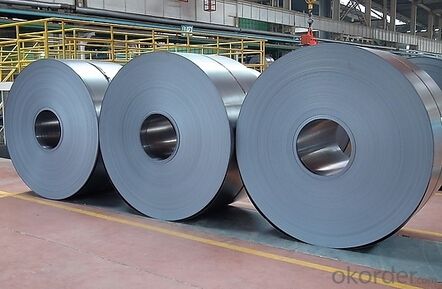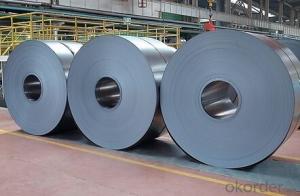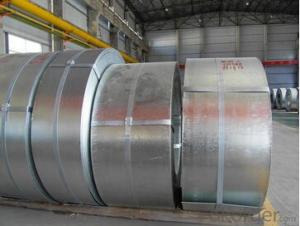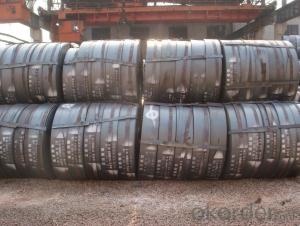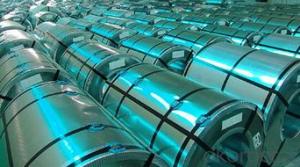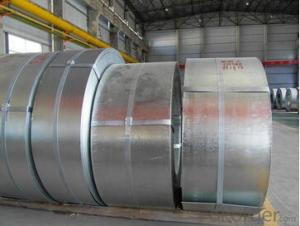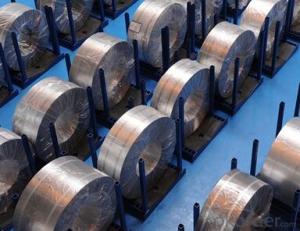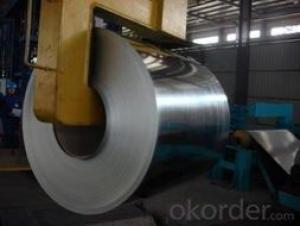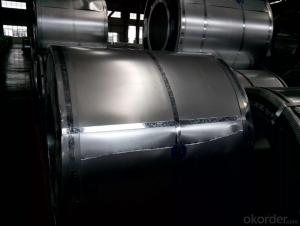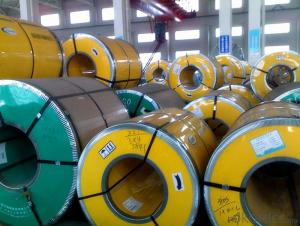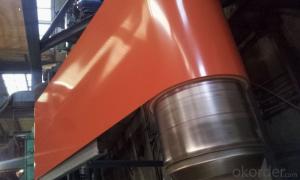Best Cold Rolled Steel Coil JIS G 3302 Walls Steel Coil ASTM 615-009
- Loading Port:
- Tianjin
- Payment Terms:
- TT OR LC
- Min Order Qty:
- 33 kg/m²
- Supply Capability:
- 11 kg/m²/month
OKorder Service Pledge
OKorder Financial Service
You Might Also Like
1.Structure of Cold Rolled Steel Description:
The raw material of cold rolled steel coil/sheet is high quality hot rolled product, and after pickling continuous rolling, degreasing, annealing,skin pass,slitting and cut to length line etc. Along with it many kinds of new technology and new process of global cold rolling production have been applied. Therefore the quality of the goods could be guaranteed. The product is widely used in outdoor and interior decoration, furnishing manufacturing, home appliance, automobile etc. it has a lower melting point than steel and good castability properties.[1] Certain compositions of cast iron, while retaining the economies of melting and casting, can be heat treated after casting to make malleable iron or ductile iron objects. Steel is also distinguishable from wrought iron (now largely obsolete), which may contain a small amount of carbon but large amounts of slag.
2.Main Features of the Cold Rolled Steel:
• Excellent process capability
• Smooth and flat surface
• Workability, durability
• Excellent heat resistance performance
• High strength
• Good formability
• Good visual effect
3.Cold Rolled Steel Images
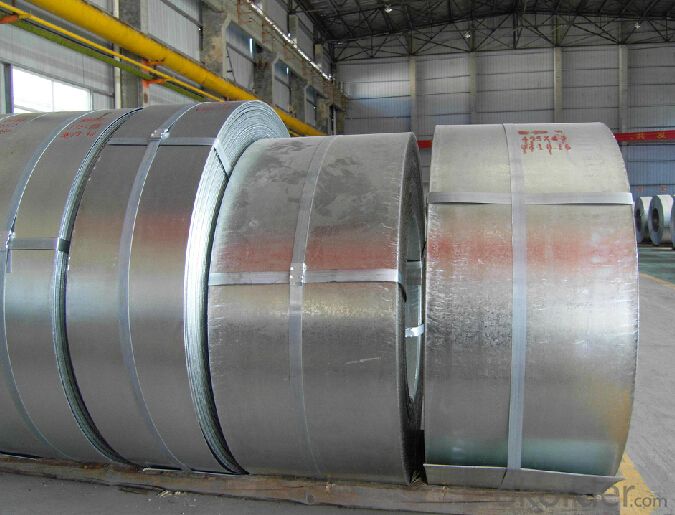
4.Cold Rolled Steel Specification
Standard:AISI,ASTM,DIN,GB,JIS,JIS G3302 ASTM 653M EN10142
Grade: Q195~Q345
Thickness: 0.16mm~1.5mm,0.16-1.5mm
Width: 1250,600-1250mm
Coil weight:3-12 MT
Coil ID:508/610mm
Chemical composition:
C | Si | Mn | Cr | Ni | P | S |
0.150 | 0.476 | 11.231 | 12.50 | 0.900 | 0.039 | 0.010
|
5.FAQ of Cold Rolled Steel
We have organized several common questions for our clients,may help you sincerely:
1.How about your company?
A world class manufacturer & supplier of castings forging in carbon steel and alloy steel,is one of the large-scale professional investment casting production bases in China,consisting of both casting foundry forging and machining factory. Annually more than 8000 tons Precision casting and forging parts are exported to markets in Europe,America and Japan. OEM casting and forging service available according to customer’s requirements.
2.How to guarantee the quality of the products?
We have established the international advanced quality management system,every link from raw material to final product we have strict quality test;We resolutely put an end to unqualified products flowing into the market. At the same time, we will provide necessary follow-up service assurance.
3. How long can we receive the product after purchase?
Usually within thirty working days after receiving buyer’s advance payment or LC. We will arrange the factory manufacturing as soon as possible. The cargo readiness usually takes 15-25 days, but the shipment will depend on the vessel situation.
- Q: How do steel strips contribute to the circular economy?
- Steel strips contribute to the circular economy by enabling the recycling and reuse of steel products. As steel is a highly versatile and durable material, steel strips can be easily recovered and reprocessed for various applications. This reduces the need for extracting new raw materials and decreases waste generation. Additionally, steel strips can be used in the manufacturing of products with longer lifespans, promoting a more sustainable and resource-efficient economy.
- Q: Can steel strips be used in automotive applications?
- Yes, steel strips can be used in automotive applications. Steel strips are commonly used in the automotive industry for various purposes such as manufacturing body panels, chassis components, and structural reinforcements due to their high strength, durability, and ability to withstand extreme conditions.
- Q: How are steel strips processed for surface grinding?
- Steel strips are processed for surface grinding by first cleaning them to remove any dirt or debris. They are then fed through a series of rollers and grinding wheels that remove any surface imperfections and create a smooth and even finish. This process ensures that the steel strips are ready for further processing or use in various applications.
- Q: What are the main factors affecting the fatigue strength of steel strips?
- The main factors affecting the fatigue strength of steel strips include the material composition, surface condition, and stress concentration. Additionally, factors such as loading conditions, temperature, and corrosion can also influence the fatigue performance of steel strips.
- Q: How do steel strips contribute to reducing waste generation in various applications?
- Steel strips contribute to reducing waste generation in various applications by providing a durable and long-lasting material that can be recycled and reused multiple times. Due to their high strength and flexibility, steel strips can be used in a wide range of industries such as construction, automotive, packaging, and appliances, among others. By using steel strips instead of other materials, less waste is generated as steel can be continuously recycled without losing its properties. Additionally, steel strips are often used in lightweight designs, reducing the overall material needed and minimizing waste production.
- Q: Can steel strips be used for making pipes?
- Certainly, pipes can be produced using steel strips. Steel strips frequently find application in the manufacturing of pipes. By rolling them into a cylindrical shape and welding or connecting them, the pipes are formed. The selection of steel as a material for pipes is popular due to its robustness, strength, and ability to withstand corrosion. Various industries, including construction, oil and gas, water supply, and plumbing, extensively utilize steel pipes.
- Q: What are the mechanical properties of steel strips?
- Steel strips have several important mechanical properties that make them a widely used material in various industries. One of the key mechanical properties of steel strips is their strength. Steel is known for its high tensile strength, which makes it capable of withstanding heavy loads and forces without deforming or breaking. This strength is essential in applications where structural integrity is critical, such as in building construction, automotive manufacturing, and aerospace. Another important mechanical property of steel strips is their hardness. Steel can be heat-treated to achieve different levels of hardness, which affects its resistance to wear, abrasion, and indentation. Harder steel strips are often used in applications where durability and resistance to surface damage are crucial, such as in cutting tools, metalworking machinery, and industrial equipment. Steel strips also exhibit excellent stiffness and elasticity, allowing them to retain their shape and return to their original form after being subjected to external forces. This property is important in applications where dimensional stability is required, such as in springs, fasteners, and precision components. Furthermore, steel strips have good ductility, meaning they can be easily shaped and formed without breaking. This property allows for the fabrication of complex and intricate designs, making steel strips suitable for applications like sheet metal fabrication, stamping, and forming processes. Steel strips also possess excellent fatigue resistance, enabling them to withstand repeated loading and unloading cycles without failure. This property is crucial in applications subjected to cyclic stress, such as in machinery components, bridges, and structural frameworks. Additionally, steel strips have good thermal conductivity, allowing them to efficiently transfer heat. This property is advantageous in applications that require heat dissipation or temperature regulation, such as in heat exchangers, radiators, and electrical appliances. In summary, the mechanical properties of steel strips, including their strength, hardness, stiffness, ductility, fatigue resistance, and thermal conductivity, make them a versatile and reliable material for a wide range of applications in various industries.
- Q: How are steel strips processed for specific applications?
- Various techniques are utilized to process steel strips for specific applications. The first step involves the selection of the suitable type of steel for the desired application, which may include carbon steel, stainless steel, or other types possessing specific properties required for the application at hand. Once the steel strip is chosen, it undergoes a series of processing steps. Typically, the initial step involves cleaning and pickling, where chemicals are utilized to eliminate impurities and scale from the surface of the strip. This process enhances the strip's surface quality and prepares it for further processing. Following the cleaning process, the strip may be rolled or annealed to attain the desired thickness and mechanical properties. Rolling entails passing the strip through a set of rollers, gradually reducing its thickness. Conversely, annealing involves heating the strip to a specific temperature and subsequently cooling it slowly to enhance its ductility and minimize internal stresses. Depending on the application, the strip may also undergo additional processing steps like tempering, galvanizing, or coating. Tempering, a heat treatment process, enhances the strip's toughness and strength. Galvanizing involves the application of a protective zinc coating to prevent corrosion. On the other hand, coating can encompass applying a layer of paint, polymer, or other materials to enhance the strip's appearance or provide additional protection. Once the steel strip is processed in accordance with the specific application requirements, it can be further fabricated into a range of products. These products encompass automotive components, construction materials, electrical equipment, and even household appliances. The processed steel strips are frequently cut, stamped, formed, or welded to achieve the desired shape and functionality. In conclusion, the processing of steel strips for specific applications involves the selection of appropriate steel, cleaning and pickling, rolling or annealing, and the application of additional treatments like tempering, galvanizing, or coating. Subsequently, the processed steel strips are fabricated into various products catering to the specific needs of diverse industries.
- Q: What are the specifications for steel strips used in the production of watches?
- The specifications pertaining to steel strips utilized in watch manufacturing can differ based on the specific preferences of the watchmaker. Nevertheless, there are some general specifications that are commonly employed in the industry. To begin with, high-quality stainless steel is typically employed in the production of watch steel strips. This material is chosen for its durability, resistance to corrosion, and aesthetic appeal. The thickness of the steel strip may vary, but it usually falls within the range of 0.10 to 0.30 millimeters. This thickness facilitates the creation of lightweight and thin watch components while ensuring structural integrity. The width of the steel strip is also a significant specification that can differ depending on the watch's design and size. Standard widths for watch steel strips typically range from 4 to 20 millimeters. Concerning surface finish, watch steel strips are often polished to achieve a sleek and glossy appearance. The level of polish can vary, with some watches featuring a highly reflective finish, while others may have a brushed or matte finish. Another crucial specification is the hardness of the steel strip. Watch components necessitate a certain level of hardness to endure daily wear and tear. Hardness is usually measured on the Rockwell scale, with a typical range of 45 to 60 HRC (Rockwell C scale). Moreover, steel strips employed in watch production may undergo additional treatments such as heat treatment, coating, or plating to enhance their performance, durability, or visual appeal. It is important to note that these specifications can differ based on the specific watch brand and model, as different manufacturers may have their own distinctive requirements and preferences. Hence, it is imperative for watchmakers to ensure they acquire steel strips that meet their precise specifications and quality standards.
- Q: What are the common applications of steel strips?
- Steel strips have various common applications in industries such as automotive, construction, manufacturing, and packaging. They are commonly used for making steel pipes, tubes, and profiles, as well as in the production of electrical appliances, machinery, and furniture. Steel strips are also utilized for creating automotive parts, such as body panels, chassis components, and suspension systems. Additionally, they are employed in the packaging industry for manufacturing metal cans and containers.
Send your message to us
Best Cold Rolled Steel Coil JIS G 3302 Walls Steel Coil ASTM 615-009
- Loading Port:
- Tianjin
- Payment Terms:
- TT OR LC
- Min Order Qty:
- 33 kg/m²
- Supply Capability:
- 11 kg/m²/month
OKorder Service Pledge
OKorder Financial Service
Similar products
Hot products
Hot Searches
Related keywords





